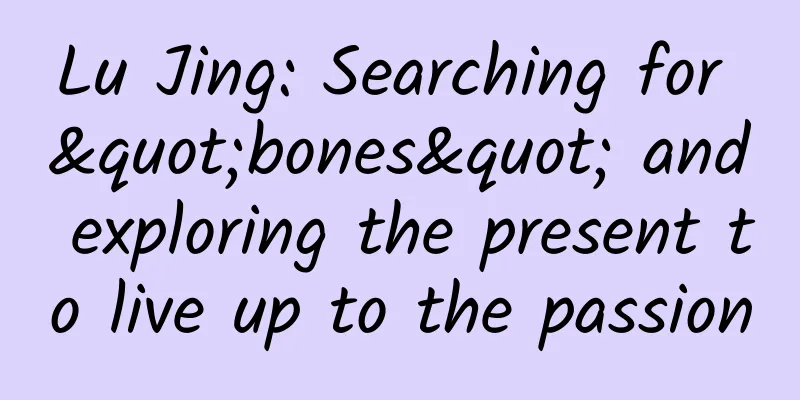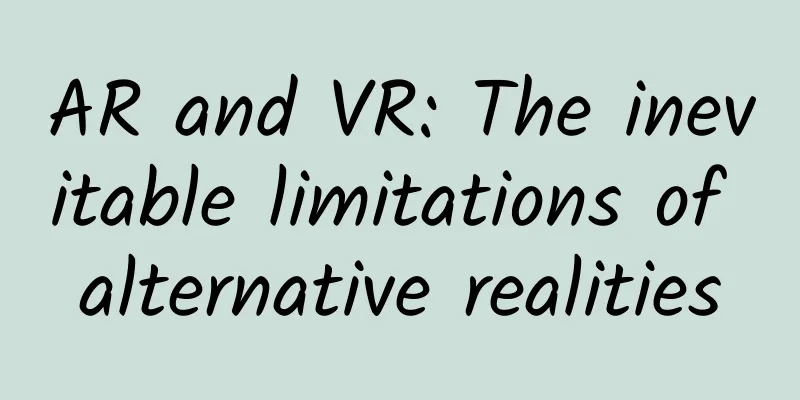Lu Jing: Searching for "bones" and exploring the present to live up to the passion

|
She traces the past and explores the future in the "bones in the stone". People call her "Teacher Lu who plays with bones". She lights up the wonderful world of paleontology with her passion. She is Lu Jing. Written by reporter Wang Xueying Edited by Ji Jingjing New Media Editor Lv Bingxin provided the photos/Lu Jing (except those with signatures) Here, you can see the deep blue Latimeria fish quietly "hiding" in the shadows, with the dots of spots on its body like flickering lights in the dark night; here, you can see the golden-red Arapaima fish flicking its tail, and the silver-blue Asian dragon fish "swaying" in the flickering light and shadow... If you think that this is a special effects scene in an aquarium or a movie, you are wrong - in the office of Lu Jing, a researcher at the Institute of Vertebrate Paleontology and Paleoanthropology, Chinese Academy of Sciences (IVPP), among her dazzling array of fish models and specimens, in this wonderful world, such wonderful encounters that transcend time and space, and transcend life and extinction, have been quietly "going on". A bond with "ancient" and "fish" "It looks a bit messy. I think boys might like my office more, haha!" Amid the hearty laughter, the reporter saw Lu Jing in a red dress. "I like these little things very much and find them very interesting, so I have been collecting them for many years," she smiled and showed us her collection, ranging from miniature fish models released by museums in various countries to life-size sketches of Latimeria, in various forms, lifelike and dazzling. Who would have thought that those underwater creatures that have long been extinct or endangered in reality would be "reborn" in such a wonderful way? "This is Latimeria, my favorite fish," Lu Jing said, picking up a model from the shelf, her voice filled with undisguised joy and pride, "I have collected all the models in this series, not one is missing." In her palm, a small Latimeria "waggles" its tail, lifelike, like a living fish swimming in the waves, "If it weren't for this, maybe I wouldn't be studying ancient fish now," she said with a smile. When talking about why she chose to study ancient fish, Lu Jing's experience is quite legendary: few people would believe that this was all thanks to a movie - Raiders of the Lost Ark. In this film and television work that combines archaeology, adventure and science fiction, the cool and handsome archaeologist Indiana Jones once left a deep impression on the young Lu Jing, "Is this archaeology? It feels so interesting!" It was also at that moment that a "seed of interest" full of curiosity about ancient creatures quietly took root in Lu Jing's heart between ignorance and yearning. ▲Lu Jing and her collection of fish specimens and models. After entering university, Lu Jing chose biology. It was during this process that she gradually discovered the unique charm of studying vertebrates. "My two favorite things - one is archaeology, the other is vertebrates. Putting them together, isn't that paleontology? At that time, I felt that this could be something I would continue to do (in my future life)," she said. When it came time to apply for graduate school, Lu Jing applied for the Institute of Vertebrate Paleontology and Paleoanthropology without much thought. "Now that I think about it carefully, I may not have known what our institute (Institute of Vertebrate Paleontology) was doing in studying these animals, but it was out of a natural intuition and interest that made me choose here in the end," she said. However, when Lu Jing was actually admitted to the Institute of Vertebrate Paleontology and Paleoanthropology, she found that paleontological research can be subdivided into many fields. So, how should she choose? At first, like many students who came here for the program, Lu Jing also wanted to study dinosaurs, but at that time, not many female students chose this field. Just when she was hesitant, Lu Jing's mentor, Zhu Min, an academician of the Chinese Academy of Sciences, handed her a book called "400 Million Years of Deep-Sea Fishes" and asked her to read it carefully. At first, this vertical traditional Chinese book with an inconspicuous cover did not attract Lu Jing's attention. It was not until she opened the book and began to read it carefully that Lu Jing discovered its uniqueness. "The whole book is actually about a creature - Latimeria. It talks about its past, how it was thought to be extinct, how it was rediscovered, and what happened when people tried to find it again... I finished reading it in less than a week. At that time, I had only one thought in my mind - I wish I could study such a legendary fish!" Talking about her wonderful fate with Latimeria because of a book, Lu Jing's eyes sparkled with excitement. "It can almost be said that this book changed my entire life. In the past, my understanding of paleontology was only about dinosaurs, but this book made me discover that there are so many interesting creatures in the world - including this fish! It cultivated my interest, and then gradually became one of my main research directions." In this way, the Latimeria fish was like a messenger sent by the goddess of fate. It led Lu Jing on her journey of exploration and pushed open the door that separated the long years and the evolution of life. Learn from the past to understand the present, and explore the future from the "bones in the stone" What wonderful changes have occurred in the bodies of fish from 400 million years ago that allowed them to step out of the water and eventually crawl onto land? In this long process, what unknown changes have occurred in these fish? How do these changes that occurred hundreds of millions of years ago have an inseparable relationship with today's humans? ... It is difficult for living fish to give Lu Jing an accurate answer to these questions - most of the fish we can see today were just an inconspicuous branch 400 million years ago, and real ancient fish such as armored fish, spiny fish, and clawed fish have now disappeared from the earth. What should we do? The method is simple: fossils. The remains of ancient organisms that are accidentally preserved in rocks are an important way for scientists today to explore the past, so dealing with "bones in rocks" has become Lu Jing's daily work. "I often tell my students that it's easy to deal with anything that is lost, except fossils," she said with a smile, and her love for these "treasures" was revealed between the lines. ▲Lu Jing working in the field (Photo source: Beijing Daily) In Lu Jing's eyes, the most interesting thing about fossils is that "opening each fossil specimen is like opening a new blind box." "For example, when we find a new fossil, we have discovered a new clue to the prehistoric world. We will conduct various studies on it, including repair, CT scanning, 3D reconstruction, and even elemental analysis. The specimens will continue to reveal evolutionary information that we did not know in the past. Every feature and every new internal information will bring me different and new surprises." Lu Jing said, "Even if it is the fossils we have studied before, with the continuous development of technical means, we will find more new information by re-studying them. So, this is really a very interesting and cool thing." Fossils left by ancient life are certainly precious, but people sometimes wonder why we go to so much trouble to study fossils from the past? Wouldn't it be better to use this time and energy to pay more attention to things in the present or even the future? Lu Jing has her own answer to this question. ▲From fish to humans, a wonderful evolution of life has taken place over hundreds of millions of years. "What we think are things from the past have never really passed. Instead, they have been integrated into our bodies and shaped into what we are now. Our arms and legs, for example, evolved from the paired fins of lobe-finned fish," she said. "If we could know where we came from, it would also help us understand where we are going in the future." In other words, in the process of studying ancient organisms, humans can not only trace their origins, but also use the past to understand the present. ▲ CT scan reconstruction image of Lu Jing and Latimeria embryo specimen. This is particularly evident in Lu Jing's favorite ancient fish, the 400 million-year-old Latimeria. "As you delve deeper into the study, you will find more and more clearly that you can see the shadows of tetrapods and even humans in these lobe-finned fish. They are a group that is closely related to us," she said. "That's why I say that studying paleontology and these ancient fish fossils is actually studying ourselves, and this is also a special charm of studying paleontology." Give science a new look: inspiration from a dish of fish heads As a scientist studying ancient fish, there are only a dozen people in the world who study the same direction as Lu Jing. However, how can more ordinary people have the opportunity to understand the mystery of the evolution of all things? In 2019, a chance opportunity brought Lu Jing into contact with a short video platform, which also opened a new door to the world of popular science for her. That was Lu Jing's first time to watch short videos. She was pleasantly surprised to find that a popular science animation of just a few dozen seconds could explain the knowledge points very clearly, "very interesting, and people are interested in it immediately." While short videos brought Lu Jing a sense of freshness, they also gave her a new idea: this format is fresh and fun, why not do it in the popular science of paleontology? What's more, a colleague was preparing a popular science article about how scientists eat fish heads, and Lu Jing suddenly had an idea - why not start with fish bones, which are very familiar to ordinary people, and lead the public to piece together bones to find the "origin"! Lu Jing, who is a "doer", immediately pulled a few doctoral students and colleagues together to eat fish head and pie in the office and piece together fish skulls. At this time, Lu Jing did not realize that he had chosen the most difficult start: among all vertebrates, fish skulls are the most numerous and the most complex in structure. Although she already had a deep understanding of osteology and anatomy, Lu Jing found that although fish heads are delicious, it is far from easy to put the fish bones back together after spitting them out. "Fish has many very small bone pieces, and it is difficult to figure out the positional relationship of these pieces in a short time. Moreover, the fish bones that have just been eaten are very oily and sticky, and it is difficult to clean them." Recalling the "experience" when shooting the first short video, Lu Jing was a little amused, "You have to be extra careful when eating, and it is easy to bite a piece off accidentally, and then you have to start over." In addition to the "difficult" bones, the filming itself was also a big challenge for Lu Jing, a "novice" in short videos. In order to ensure the integrity of the video, Lu Jing stood for 4 hours without daring to move a step, not even daring to breathe... It took a full five hours to record a video from 5 pm to 10 pm. "I almost collapsed after the filming," Lu Jing said, "It's really too difficult for a scientific researcher to do this." Fortunately, hard work pays off. Once this short video was released, Lu Jing won more than 110,000 likes on Douyin. The positive feedback from netizens gave Lu Jing and his colleagues confidence. In the following days, they started with eating bighead carp, and then gradually made stewed turtle, braised chicken, and even Peking duck "reborn" - of course, still in the form of a skeleton. In this way, Lu Jing used the unique way of a paleontologist to lead more people to approach the "unpopular" profession of paleontology, and let more people understand the wonderful relationship between biological evolution. ▲The assembled chicken bones can also be used to cosplay Archaeopteryx "In fact, we scientific researchers have a natural aversion to the camera, but the main reason why I can do this is because the public has given us a lot of positive feedback." Lu Jing told reporters that before this, if she wanted to tell the public that chickens evolved from dinosaurs, she would need to present a lot of facts and evidence. But when she put the chicken skeleton together, the public would look at the chicken skeleton in front of them and couldn't help but think of the dinosaur bones in the museum. From the similarities between the two, they realized that the ancestors of chickens and dinosaurs were very closely related. "In fact, our popular science education has been successful at this time," said Lu Jing. "We don't need to use more words. In less than a minute, we can make the public realize that organisms are constantly evolving and that birds evolved from dinosaurs." Light up your life with passion and turn "bitterness" into "coolness" Lu Jing's attempt to popularize interesting knowledge about paleontology to the public in the form of short videos is undoubtedly successful. However, as a scientific researcher, Lu Jing still spends most of his time and energy on scientific research. Although there is only a one-letter difference between "scientific research" and "popular science", there is actually a world of difference between the two. Having been deeply engaged in ancient fish research for many years, going out into the wild has become a daily routine for Lu Jing. Sometimes she is "isolated from the world" in the desert Gobi, with no signal for weeks; sometimes she has to "fight wits and courage" with all kinds of snakes, insects, rats and ants in the wind and rain... What outsiders see as hard and tiring is not the case in Lu Jing's eyes. "Whether you can persist in doing something well depends on whether you are interested in it. If you are interested, even if you are exposed to the sun in the bare wild, you will feel that it is cool from the bottom of your heart, not bitter," she said. In Lu Jing's view, whether it is in the wild under the sun and rain, or in the laboratory day and night, it is impossible to say that doing scientific research is not bitter, but if there is passion in your heart, then the process is not only not "bitter" but also very "cool." "We can't deny that scientific research has its 'distressing' side, because you have to be able to calm down and sit down steadily, find problems and solve them, but this is the most basic condition for doing good research. Scientific research also has its pleasant side. Doing research is a process of 'playing', and you have to enjoy the process." Lu Jing said. ▲In 2019, Lu Jing shared her experience in popular science short videos at the "2019 DOU Creator Conference" Passion is the most lasting motivation in a person's heart. It gives people the positivity and optimism to find joy in adversity, and also gives people the motivation and perseverance to persevere. For a long time, when people talk about scientific research and scientists, they always can't do without the word "hardship". In this regard, Lu Jing frankly said that "cool" is more. "I don't really like to describe scientific research work with descriptions like 'working hard day after day for ten years' and 'willing to sit on the bench'. Think about it carefully, is there any work that you want to do well but does not require 'willing to sit on the bench for ten years'? Such descriptions can easily lead the public to misunderstand scientific research work, thinking that only scientific research work requires working hard day after day for ten years." She continued, "In fact, although scientific researchers always sit at the table, typing and writing papers as if calmly, they are actually surging in their hearts." She smiled and "exposed" to the reporter, hoping that everyone would not be "misled" by the daily work of scientific researchers. "Take me as an example. I often type on the surface, but in fact I have been sighing in my heart over and over again, 'It's amazing, it's really amazing, I can even discover this!' - We will be moved, excited, and proud of our new discoveries, and this state will make me feel particularly good as a whole (self)." "In the wild, women can also use their unique advantages to explore the traces of our human ancestors." Recently, Lu Jing participated in the 2022 "Her Future" rural girls' science and technology education activity, using her own struggle story to encourage the general public, especially young people, to love science and learn science, and to stimulate the innovative vitality of female scientific and technological talents. It is such a rare blessing to be able to see your own heart and find what you love. "Everyone must have been more or less confused about their future, but I want to say, do what you like! If you like it, it will make you full of energy. There will definitely be difficulties, but you will definitely find a way to overcome them and stick to it, and I believe you can do it well," said Lu Jing. Produced by: Science Central Kitchen Produced by: Beijing Science and Technology News | Beijing Science and Technology Media Reproduction without authorization is prohibited, and offenders will be prosecuted |
<<: The Strange Activities of 19th Century Scientists - Losing Cats
Recommend
Toutiao News Feed Advertising Optimization [Practical Tips] Tutorial
Chapter 1: Getting Started 1.1: Introduction to T...
Data rankings of 50 information flow advertising platforms! This is the one with the biggest increase! ?
The traffic rankings of major information flow pl...
App download revenue: Apple takes 85%, while China Mobile only takes 15%
Yesterday, reporters learned from China Mobile tha...
Google introduces new biometric authentication API for Android P
Google is looking to improve biometrics in its up...
Liu Yao video collection (17 sets 138.39G)
Liu Yao video collection (17 sets 138.39G) Resour...
20 ways to promote and attract traffic on the Internet, save them!
Hello everyone, today I will share with you the “...
The novel of Bone Erosion is on Baidu Cloud, the complete novel of Bone Erosion plus extra chapters is on Baidu Cloud, the full text of Bone Erosion plus extra chapters txt is on Baidu Netdisk!
Xia Weiming died, and Shen Xiujin personally sent...
PC WeChat article one-click export assistant_resource cat, green software download station
A free WeChat article export tool that can export...
Dingxiang Mama's "Breastfeeding Guide"
Dingxiang Mama's "Breastfeeding Guide&qu...
6 key points for event planning and promotion!
How to create an event that will go viral on WeCh...
In-depth analysis - Internet advertising bidding model
The development of bidding models in Internet adv...
Behind AT&T's $85.4 billion acquisition of Time Warner is the anxiety of the giant
American telecommunications giant AT&T and Ti...
Will operators dominate the smart router market?
Abstract: Although communication operators have i...
How amazing is the iPhone 7 Plus dual camera + "portrait" mode?
The dual-camera upgrade of iPhone 7 Plus is the bi...
The Chinese have waited 40 years for this "aircraft carrier"
At present, there is an "aircraft carrier&qu...









